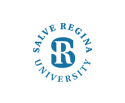Illuminated art in the court of Charles the Bald: A study of the great Carolingian Bibles of the 9th century
Abstract
This dissertation explores the relationship between technology and 9th century Christian art as well as the integrative forces that compelled religion and technology to produce art. It seeks to examine this art using the Greek definition of technology (techne-art/craft, and logia-study/discourse). It is a study of the Augustinian city of God: a city of men working assiduously to preserve sacred words and deeds using the flavors, seeds, and stones of the earth and blending them into works that would both please God and illuminate him for man. The early part of the dissertation focuses on the theological framework behind the production of these Bibles, with an emphasis on the writings of the fathers of the church including St. Augustine, St. Ambrose, and St Benedict. Their thoughts concerning the effects of Scripture are of primary importance. Other chapters blend the study of methods of producing these bibles with specific forms of technology used. Various folios from these Bibles are analyzed in terms of their artistic methods and their Christian messages. The end result of this dissertation is an understanding of the political and philosophical aspects of religious art as well as the technological imperatives in their production.
Recommended Citation
Browning, Gerald L., "Illuminated art in the court of Charles the Bald: A study of the great Carolingian Bibles of the 9th century" (2007). Doctoral Dissertations. 147.
https://digitalcommons.salve.edu/doctoral_dissertations/147
Date of Award
1-1-2007
Document Type
Dissertation


